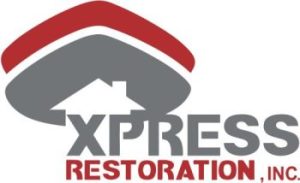Homeowners' Roadmap for
Wildfire Recovery and Repairs
Have you recently experienced fire damageto your home and feel overwhelmed by repairs like fixing leaks or replacing burned carpets? This guide covers how to assess wildfire damage, understand your insurancecoverage, and create a comprehensive recovery plan. By following these steps, you can effectively restore your propertyand protect it against future fires. Learn how to navigate the challenges of firerecovery and ensure your home is safe and secure again.
Assessing Wildfire Damage to Your Home and Property
Evaluating landscaping and land risks is essential, alongside managing potential fungusgrowth. Documenting all damages accurately will aid insuranceclaims and recovery efforts. Gathering expert opinions ensures appropriate repair needs are identified and damages are prioritized based on severity.
Identify Structural Integrity Issues After Wildfire Damage
Assessing structural integrity after a wildfire requires meticulous attention to heatdamage and the effectiveness of smoke remediationefforts. Homeowners should collaborate with the board of directorsof their homeowner association to ensure that all affected areas are thoroughly inspected and that repair priorities are clearly established.
Understanding the impact on the surrounding habitatis crucial for identifying potential structural weaknesses. Comprehensive fireclean up not only restores the propertybut also addresses environmental factors that could compromise the home’s stability in the future.
Evaluate Landscaping and Land Risks Post-Fire
After a wildfire, evaluating landscaping and land risks is essential to prevent future incidents. Professional fire damage cleanup Implementing industrybest practices in landscaping can significantly reduce the likelihood of recurrent wildfire threats.
Homeowners should develop a comprehensive backupplan for ongoing maintenance and consider smoke damage cleaningto address lingering effects on the property’s exterior. Collaborating with experts in the industryensures that the land is properly managed and hazards are minimized, fostering a safer environment for the home and surrounding areas.

Quick Tip: Contact Your Insurance Agent for Guidance
GET YOUR FREE ASSESSMENT
Call Now for Immediate Water Damage Cleanup and Repair.
Document Damages for Insurance and Recovery
Creating a detailed checklistis essential for homeowners in Californiato accurately document propertydamage after a wildfire. By systematically recording debrislevels and assessing areas affected by fireand water damage restoration, homeowners can provide comprehensive information to their insuranceproviders, ensuring all losses are accounted for.
Thorough documentation involves capturing photographs and notes of all damaged structures and belongings, which aids in expediting the insuranceclaim process. Utilizing professional services for water damage restorationnot only mitigates further propertydeterioration but also strengthens the recovery case with verified reports and expert assessments.
Gather Expert Opinions on Repair Needs
Engaging with professionals who adhere to the National Fire Protection Association standardsensures that all repair needs are thoroughly evaluated. These experts can identify issues like corrosionand assess any potential healthhazards, providing homeowners with reliable guidance. Their commitment to excellent customer servicefacilitates a smooth recovery process, addressing concerns promptly and effectively.
Additionally, specialists can implement first aidmeasures for the property, mitigating immediate risks and preventing further deterioration. By seeking expert opinions, homeowners can prioritize essential repairs that protect both the structure and the healthof its occupants, ensuring a safe and resilient home environment.
Prioritize Damages Based on Severity and Impact
After conducting a thorough inspection, homeowners should prioritize addressing structural damages that pose immediate safetyrisks, such as compromised drywallor foundation issues caused by erosion. Focusing on these critical repairs first ensures the home remains secure while preventing further deterioration from unchecked issues like waterinfiltration during fireand waterrestorationprocesses.
Once the most severe damages are managed, attention can shift to less urgent repairs, including cosmetic fixes and moldprevention. Utilizing tools like a vacuumcan help remove debrisand mitigate healthhazards, while systematically categorizing remaining damage allows for efficient allocation of resources and smoother progression through the restorationprocess.
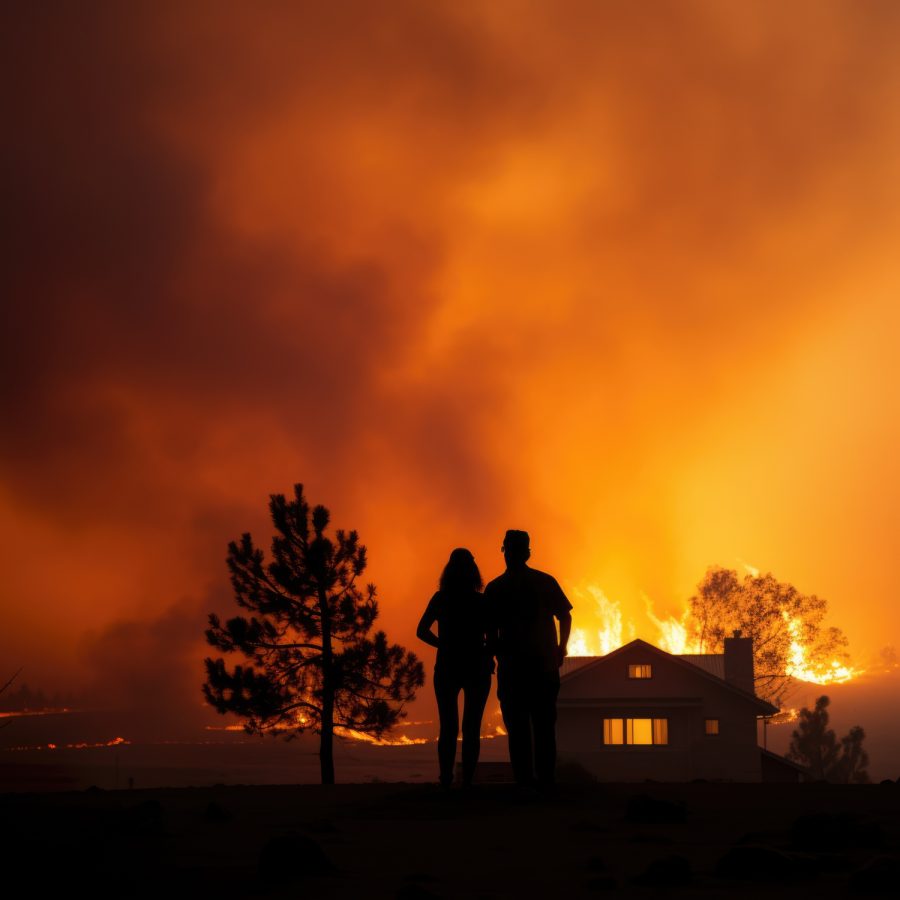
Understanding Insurance Coverage for Wildfire Damages
Homeowners should review insurancepolicies for wildfire-specific clauses to ensure coverage meets current standards. Documenting damages to woodstructures, upholstery, and personal spaces is essential.
Contact insuranceagents for guidance and monitor the claim process closely. If claims are denied, appealing with strong evidence and firefighterreports can lead to a successful resolution.
Review Your Home Insurance Policy for Wildfire Clauses
Homeowners should carefully examine their insurancepolicies to ensure that sootand structural damagecaused by wildfires are adequately covered. Understanding the specifics of how damage to components like ducts is handled can prevent unexpected out-of-pocket expenses during the restorationprocess. This clarity allows homeowners to know exactly what repairs are reimbursable, facilitating a smoother recovery.
Engaging with a reputable restoration companycan provide valuable insights into the insuranceclaims process, ensuring that all necessary documentation is accurately submitted. Restoration professionalscan assist in identifying covered damages and advocating on behalf of the homeowner, making the path to restoring the propertymore efficient and less stressful.
Gather Necessary Documentation for Your Claim
Homeowners must meticulously document all instances of smoke damageand moistureinfiltration by taking clear photographs and detailed notes of affected areas. This includes capturing the condition of furniture, buildingstructures, and any restorationwork that has commenced, ensuring that every aspect of the damage is recorded comprehensively.
Additionally, keeping receipts and records of expenses related to the restorationprocess is crucial for substantiating claims. By organizing this documentation effectively, homeowners can provide their insuranceproviders with the necessary evidence to support their claims, facilitating a smoother and more accurate reimbursement process.
Contact Your Insurance Agent for Guidance
Contacting an insuranceagent promptly after a wildfire is crucial for navigating the complexities of restoration. The agent can guide homeowners through necessary services such as water extractionand ventilationimprovements, ensuring that all essential repairs are covered under the policy. By working closely with restorationspecialists recommended by the insurer, homeowners can streamline the recovery process and address immediate concerns effectively.
Insuranceagents also play a vital role in selecting appropriate restorationmethods, including the use of ozonetreatments to eliminate lingering smokeodors and paintto restore damaged surfaces. Their expertise helps homeowners understand the scope of their coverage, facilitating informed decisions that enhance the property‘s resilience. Engaging with an insuranceprofessional ensures that every aspect of the restorationis handled efficiently, supporting a thorough and successful recovery.
Track Progress of Your Insurance Claim Process
Homeowners should regularly communicate with their insuranceagent to monitor the status of their claim, ensuring that all aspects of fire restoration cleaningare addressed promptly. By keeping detailed records of ongoing repairs, such as ceilingreplacements or mitigating contamination, homeowners can track progress effectively and stay informed throughout the process.
Using tools like online claim portals can help homeowners oversee the safetymeasures implemented during restorationand verify that all necessary steps are being taken to resolve issues caused by the flamedamage. Additionally, scheduling periodic inspections ensures that tasks like ceilingrepairs and contaminationcontrols are completed according to the agreed timeline, promoting a smooth recovery.
Appeal Denied Claims With Strong Evidence and Support
When an insuranceclaim for fire restorationis denied, homeowners can strengthen their appeal by providing comprehensive evidence of the damage. This includes detailed photographs, expert assessments of structural hazards, and documentation of any antimicrobialtreatments needed to address moldor other healthrisks. Collecting thorough records ensures that the customer’s case is clearly presented, increasing the likelihood of a successful appeal.
Engaging with professionals who specialize in natural disasterrecovery can provide critical support during the appeals process. These experts can offer credible reports and witness accounts that highlight the extent of the fire damageand the necessary repairs. By assembling strong, factual evidence, homeowners can effectively challenge denied claims and secure the coverage needed to restore their propertysafely.
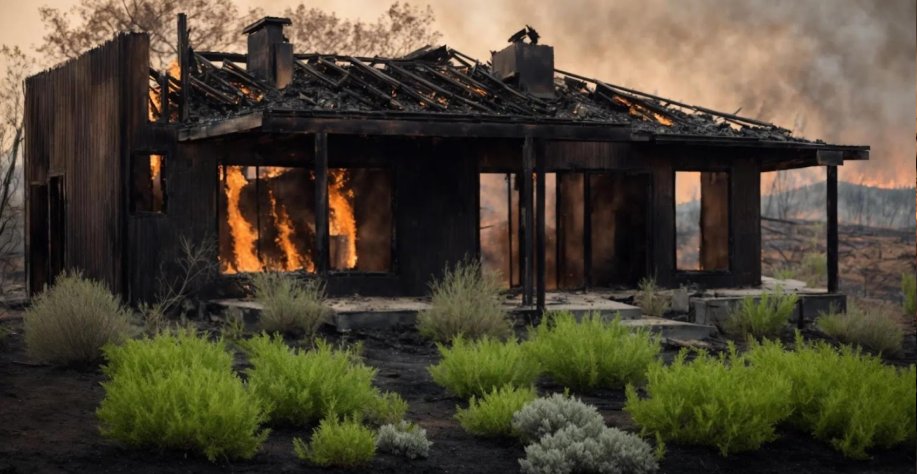
Creating a Comprehensive Recovery and Repair Plan
Homeowners should establish clear goals for wildfire recovery, set a timeline for repairs and rebuilding, and allocate a budget for fire damagerestorationand upgrades. Identifying local contractors with wildfire experience and determining necessary permits are vital. Utilizing dataon smokeand floodimpacts supports informed decisions, ensuring a comprehensive repair and recovery plan.
Set Clear Goals for Wildfire Recovery Efforts
Setting clear goals for wildfire recovery efforts involves prioritizing essential tasks such as deploying a dehumidifierto prevent moldgrowth and hiring certified fireclean up services to ensure thorough propertyrestoration. By outlining specific objectives, homeowners can effectively manage repairs and mitigate further damage, ensuring that each step of the recovery process is addressed systematically.
Incorporating the latest technologycan streamline the restorationprocess, allowing for efficient assessment and repair of damaged areas, including necessary plumbingfixes. Establishing measurable milestones and collaborating with certified professionals ensures that recovery efforts stay on track, providing homeowners with a structured roadmap to restore their homes confidently.
Establish a Timeline for Repairs and Rebuilding
Creating a realistic timeline for repairs and rebuilding begins with the prompt removalof debrisby professional crews. Coordinating with local firerestorationcompanies near me ensures that constructioncan commence swiftly, minimizing the riskof further damage and accelerating the recovery process.
Integrating damage restorationtasks, such as installing new air filters, into the schedule helps maintain a safe indoor environment during repairs. By setting specific milestones and regularly reviewing progress, homeowners can effectively manage each phase of the restoration, ensuring a smooth and organized rebuilding experience.
Allocate Budget for Repairs and Possible Upgrades
Allocating a portion of the budget to professional moldremediation and smokeremovalservices is critical, as lingering bacteriaand moldcan pose significant healthrisks. Investing in these essential services ensures that the home environment is safe and free from harmful contaminants, facilitating a healthier living spacefor occupants.
Homeowners should also allocate funds for repairing waterdamage and addressing any structural injuries to prevent future complications. Setting aside a budget for upgrades, such as improved ventilationsystems, can help minimize moldgrowth and enhance the property‘s resilience against similar events.
Identify Local Contractors With Wildfire Recovery Experience
Connecting with local contractors who have a proven track record in wildfire recovery is essential for effective restoration. Homeowners can consult the firedepartment for trusted recommendations, ensuring that the chosen professionals understand the specific ecological challenges and risks associated with the area. These contractors are equipped to handle roofrepairs and other critical tasks with expertise tailored to the local environment.
Experienced contractors not only restore structural damagebut also contribute to enhancing the property‘s resilience against future wildfires. By sharing insights on fire-resistant materials and sustainable practices, they help maintain the balance of the local ecologywhile minimizing potential risks. Selecting such knowledgeable professionals ensures a comprehensive and environmentally conscious recovery process.
Determine Necessary Permits for Reconstruction
Obtaining the necessary permits for reconstruction is a crucial step in the wildfire recovery process. Homeowners should leverage their knowledgeof local buildingcodes and regulations to ensure all repairs comply with municipal standards. Collaborating with a reputable firerestoration companyin the northcan simplify this process, as these professionals often have experience navigating the permit requirements specific to wildfire-affected areas.
Engaging with local authorities early on can expedite the permit approval process, allowing for timely commencement of cleaningand waterrestorationefforts. Additionally, understanding the permit timeline and required documentation helps homeowners avoid delays, ensuring that reconstruction progresses smoothly. By taking a proactive approach, homeowners can efficiently manage the regulatory aspects of their recovery plan.
Implementing Effective Fire-Resilient Strategies
Implementing fire-resilient strategies enhances disaster recoveryby upgrading buildingmaterials for fireresistance and designing landscapes with firesafetyin mind. Creating defensible spacearound homes and installing firebreaks and safetybarriers are essential steps.
Educating families on firesafetyand evacuation plans further strengthens home protection. These measures help mitigate smoke damageclean up and reduce odorissues post-wildfire.
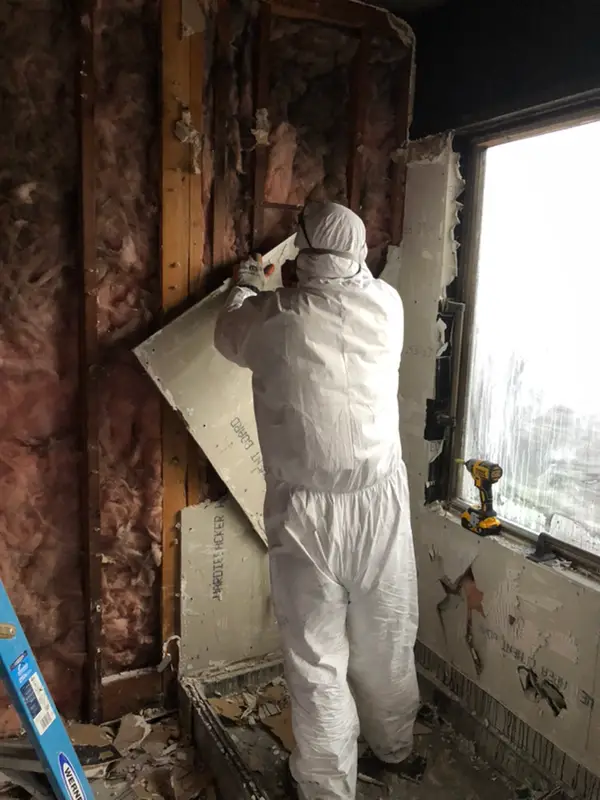
Upgrade Building Materials for Fire Resistance
Upgrading buildingmaterials is a crucial step in enhancing firesafetyand ensuring long-term resilience against wildfires. Homeowners should consider replacing vulnerable elements such as wooden siding with fire-resistant alternatives like fiber cement or stucco. Additionally, updating electrical systems to meet current safetystandardscan prevent potential ignition sources, while addressing any issues related to waterdamage and sewageto maintain the integrity of the structure.
Implementing these upgrades may require partial or complete demolitionof compromised sections to ensure a thorough restoration. By selecting materials designed to withstand extreme conditions, homeowners not only protect their propertybut also reduce the need for frequent repairs. This proactive approach not only fortifies the home against future firethreats but also streamlines the recovery process by minimizing vulnerabilities related to electricityand other essential systems.
Design Landscape With Fire Safety in Mind
Designing a landscape with firesafetyin mind involves selecting fire-resistant plants and strategically clearing vegetation to create barriers against wildfires. Partnering with a trusted restorationservices companyensures that these measures are effectively implemented, enhancing the property’s resilience during emergencies.
Integrating non-flammable materials and maintaining open spaces around the home are crucial steps in reducing firerisks. A professional disaster restorationcompanycan provide expert guidance on landscape planning, ensuring that the environment is optimized for safetyand swift recovery in the event of a wildfire.
Create Defensible Space Around Your Home
Creating defensible spacearound a home involves strategically clearing vegetation and combustible materials to minimize wildfire risks. By maintaining clear zones and using fire-resistant landscaping, homeowners can significantly enhance their property‘s safetyand reduce the likelihood of firespreading to their residence.
Regular maintenance, such as trimming trees and removing dry brush, ensures that potential firefuels are minimized near the home. This proactive approach not only protects the structure but also provides safe access routes for emergencyresponders, contributing to a more secure and resilient living environment.
Install Firebreaks and Safety Barriers
Installing firebreaks and safetybarriers around a propertysignificantly reduces the riskof wildfire spreading to the home. By clearing vegetation and creating buffer zones, homeowners can disrupt the continuous fuel sources that wildfires rely on, providing critical protection during fireevents. Properly maintained firebreaks ensure that any approaching flames are less likely to reach the structure, enhancing the overall safetyof the residence.
Safetybarriers, such as non-combustible fencing and strategically placed stone walls, further strengthen a property‘s defenses against wildfires. These barriers not only impede the progress of flames but also help direct the flow of fireaway from vulnerable areas. Implementing these measures requires careful planning and regular upkeep to ensure their effectiveness, ultimately contributing to a more resilient and secure home environment.
Educate Family on Fire Safety and Evacuation Plans
Homeowners should organize regular family discussions to outline firesafetymeasures and establish clear evacuation routes. By rehearsing these plans, each household member understands their responsibilities, ensuring a coordinated and efficient response during a wildfire emergency.
Providing visual aids, such as maps highlighting escape paths and safe meeting areas, helps families stay prepared and reduces panic in stressful situations. Additionally, incorporating local emergencycontacts and resources into the evacuation plan ensures that everyone knows where to seek help, enhancing the household’s overall safetyand readiness.
Access Government Assistance Programs for Damaged Homes
Government assistance programs provide essential financial support to homeowners impacted by wildfires, aiding in the restoration and rebuilding of damaged homes. Programs such as FEMA’s Individual Assistance offer grants and low-interest loans to eligible families, ensuring they have the resources needed to recover effectively.
To access these programs, homeowners should visit official government websites or contact local disaster recovery offices to understand the application process and eligibility criteria. Preparing necessary documentation and seeking advice from disaster recovery experts can help residents navigate these programs smoothly and secure the necessary aid for their wildfire recovery.
Leveraging Community Resources for Wildfire Recovery
Leveraging community resources is vital for effective wildfire recovery. Homeowners can connect with local support groups for guidance, access government assistance programs for damaged homes, and participate in community planning meetings post-wildfire. Sharing resources and information among neighbors fosters mutual support, while involving local firedepartments ensures safetyconsultations are properly addressed.
Connect With Local Support Groups for Guidance
Local support groups provide essential assistance to homeowners recovering from wildfires by offering a platform to shareexperiences and access valuable resources. These groups often connect individuals with community leaders and experts who can guide them through the restorationprocess.
By engaging with these support networks, homeowners can receive practical advice on rebuilding strategies and emotional support during the challenging recovery period. Using the collective knowledgewithin local groups ensures that residents have the necessary tools to restore their homes effectively.

Participate in Community Planning Meetings Post-Wildfire
Participating in community planning meetings enables homeowners to stay updated on local wildfire recovery initiatives and to sharetheir insights with decision-makers. These gatherings provide a valuable opportunity for residents to collaborate with municipal leaders, ensuring that restorationefforts align with the community’s needs and priorities.
By attending these meetings, homeowners gain access to crucial resources and support systems that facilitate the rebuilding process. Active involvement in community discussions also helps individuals understand broader strategies for enhancing neighborhood resilience, promoting a coordinated and effective approach to wildfire recovery.
Share Resources and Information Among Neighbors
Neighbors can play a crucial role in wildfire recovery by sharing resources such as tools, equipment, and transportation to assist with cleanup and repairs. By organizing community toollibraries or lending programs, homeowners can reduce individual costs and expedite the restorationprocess. This collaborative approach not only fosters a sense of solidarity but also ensures that essential resources are readily available to those in need.
Exchanging information about trusted local contractors, restorationservices, and available grants can significantly enhance the efficiency of the recovery efforts. Neighborhood groups can create online platforms or regular meetups where members can provide recommendations and updates on their progress. This open communication helps homeowners make informed decisions, avoid common pitfalls, and leverage collective knowledgeto rebuild their homes more effectively.
Involve Local Fire Departments for Safety Consultations
Collaborating with local firedepartments enables homeowners to receive expert guidance on enhancing firesafetymeasures, essential for effective wildfire recovery. Fireofficials can assess the propertyfor vulnerabilities and recommend strategies to prevent future incidents, ensuring that the home is better protected against potential threats.
Local firedepartments also assist in developing comprehensive evacuation plans and provide training on emergencyprocedures, empowering homeowners to respond swiftly and safely during wildfires. This partnership not only strengthens the overall safetyof the residence but also fosters a resilient community prepared to handle future wildfire challenges.
Monitoring Progress and Making Adjustments
Effective wildfire recovery involves regularly reviewing the recovery plan for effectiveness and adjusting timelines and budgets as needed. Staying informed on local wildfire prevention initiatives, maintaining open communication with contractors and teams, and celebrating milestones achieved are crucial steps. These actions ensure that homeowners can adapt their strategies and stay on track throughout their recovery journey.
Adjust Timeline and Budgets Based on Progress
Homeowners should regularly evaluate the progress of their wildfire recovery to identify any deviations from the initial plan. If certain repairs take longer than expected, adjusting the timeline ensures that all essential tasks are completed without compromising quality. This proactive approach helps in managing stress and setting realistic expectations throughout the restorationprocess.
Similarly, revisiting the budget in light of ongoing repairs and unexpected expenses allows homeowners to allocate funds more effectively. By tracking expenditures and prioritizing critical repairs, homeowners can make informed financial decisions that support a smooth and efficient recovery. Flexibility in budget managementis key to addressing any unforeseen challenges that may arise during the restorationefforts.
Stay Informed on Local Wildfire Prevention Initiatives
Staying informed about local wildfire prevention initiatives allows homeowners to implement effective safety measures tailored to their community’s specific needs. By regularly checking updates from local fire departments and participating in neighborhood safety programs, residents can stay ahead of potential threats and ensure their properties are equipped with the latest fire-resistant technologies.
Additionally, engaging with community wildfire prevention efforts fosters a collaborative environment where homeowners can share resources and strategies. Attending town hall meetings and subscribing to local alert systems provide valuable insights into upcoming prevention projects and regulatory changes, enabling homeowners to adapt their recovery and repair plans accordingly
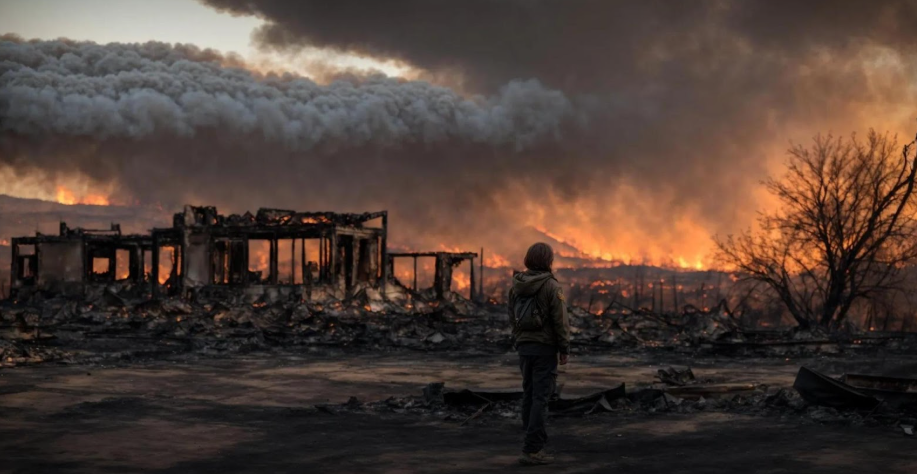
Keep Communication Open With Contractors and Teams
Maintaining regular updates with contractors ensures that homeowners stay informed about the restorationprogress and can promptly address any emerging issues. Scheduling consistent check-ins allows both parties to discuss milestones, adjust timelines, and resolve challenges efficiently, keeping the recovery process on track.
Utilizing effective communication channels, such as phone calls, emails, or project managementsoftware, facilitates clear and consistent interactions between homeowners and their teams. This openness helps align expectations, ensures transparency, and fosters a collaborative environment, ultimately leading to a smoother and more successful wildfire recovery.
Celebrate Milestones Achieved in Your Recovery Journey
Recognizing and celebrating milestones in the recovery journey helps homeowners stay motivated and appreciate the progress made after a wildfire. Acknowledging the completion of significant repairs or restorationtasks provides a sense of accomplishment and reinforces the commitment to rebuilding their homes.
Celebrating achievements also contributes to the emotional well-being of homeowners, offering moments of relief and positivity amid the challenges of recovery. By marking each milestone, individuals can maintain focus and drive, ensuring that the restorationprocess continues smoothly and effectively.
Conclusion: Key Steps for Successful Wildfire Recovery and RestorationConclusion
A comprehensive roadmap guides homeowners through each step of wildfire recovery, ensuring all damages are properly assessed and documented. By understanding insurancecoverage and creating a detailed repair plan, homeowners can navigate the restorationprocess efficiently. Implementing fire-resilient strategies and leveraging community resources further enhances the property‘s safetyand resilience. Staying proactive and adaptable throughout the recovery journey guarantees a secure and sustainable home environment.

